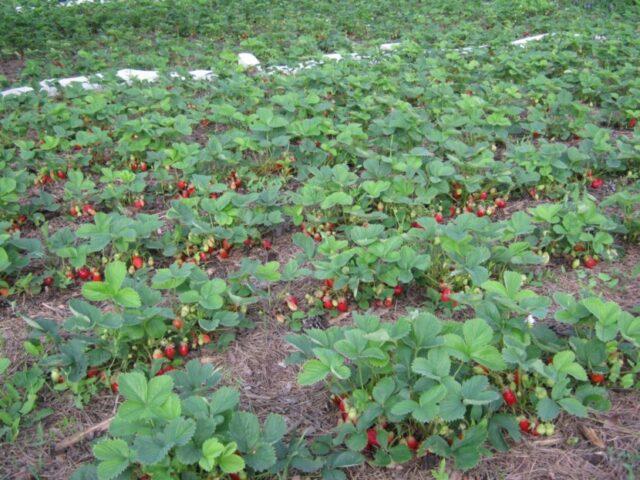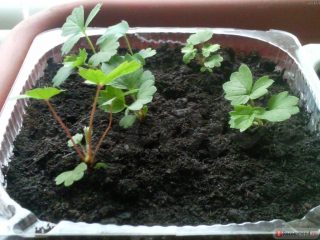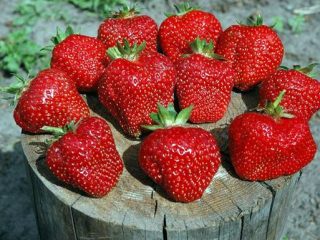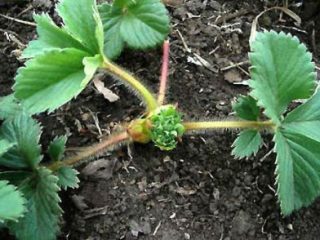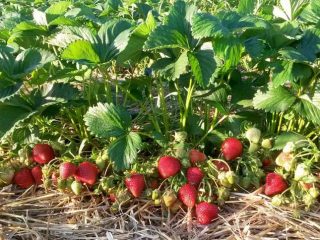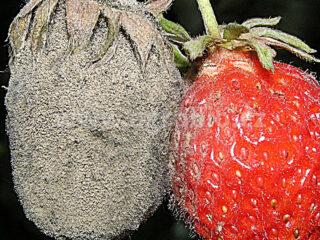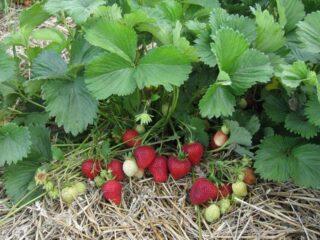Content
Ada Strawberry is a remontant variety with large berries. Gardeners appreciated the culture obtained by German breeders. The berries of the Ada strawberry are tasty, juicy, with a bright strawberry smell. They are used fresh, as well as for winter preparations.
Origin story
The remontant Ada strawberry was bred in Germany in the pre-war years. Much later it came to Russia, where gardeners in various parts of the country began to grow it with pleasure. The variety is remontant, with two waves of crop formation.
Characteristics and description of Ada variety strawberries
Ada strawberry is a popular variety among Russian gardeners. The variety is self-fertile, therefore it produces a stable harvest.
The bushes of the crop are spreading, reaching a height of 15-20 cm. The foliage is green, without gloss. The flowers are white, formed on peduncles at the level of the leaves or slightly higher.
Appearance and taste of berries
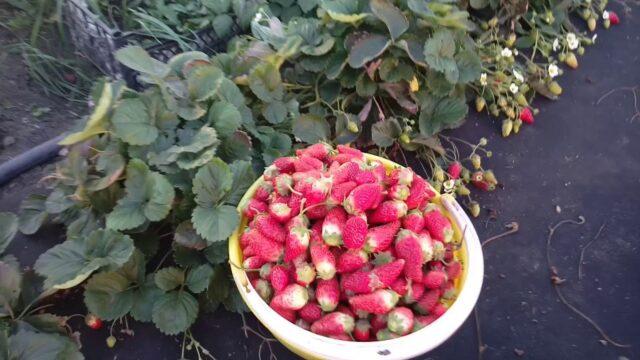
Ada strawberries are bright red with a noticeable shine
Fruiting occurs on the main bushes and on the tendrils.The first berries are enlarged, each weighing about 20 g. The subsequent ones are smaller. The average weight of berries is 8–15 g. The shape is oval or conical. The pulp is light pink, loose, with a bright core. The taste is pleasant, sweet, with slight sourness.
Flowering period, ripening period and yield
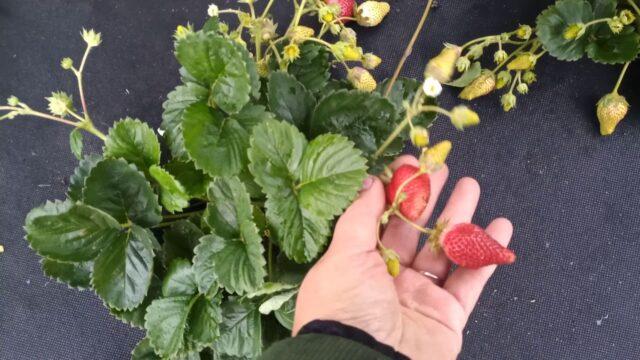
The Ada variety is remontant, so flowering occurs twice per season.
Flowers appear for the first time in May, 5–7 days earlier than in garden varieties. The second time flowering occurs in July. Fruiting lasts from spring until the first autumn frosts.
The yield of the variety is not very high. From one hundred square meters you can collect about 130 kg. Therefore, Ada strawberries are rarely grown on an industrial scale. But you can often find it in homesteads. The crop is in demand due to its long fruiting period.
Frost resistance
According to the description of the originator, the variety is frost-resistant, but in regions with unfavorable conditions it requires shelter for the winter. Without a thick layer of mulch it does not freeze out only in the southern regions. In temperate climates, bushes must be protected from frost with improvised materials. You can use dry leaves, peat, spruce branches.
Resistance to diseases and pests
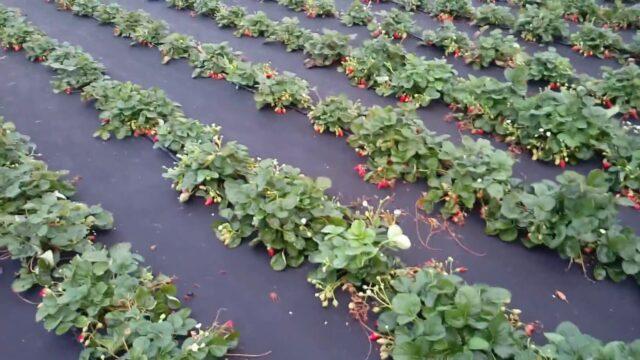
Ada strawberry is not particularly resistant to crop diseases
The variety is not immune to white spot. A fungal disease affects the foliage. With gray rot, there is a danger of losing almost the entire crop. The disease occurs in cool and damp weather.
Chemical, biological and folk remedies are used for spraying. Chemicals are toxic, so they are rarely used.When working with harmful substances, personal protective equipment is used: goggles, respirators, rubber gloves. Among the chemicals that are considered effective: Fundazol, Intavir, Bordeaux mixture.
Biological products Fitosporin and Trichodermin are non-toxic to humans. They help fight fungal diseases of the crop.
The main danger to Ada strawberries is strawberry mites. They appear in warm and humid weather. Insects do not gnaw the berries, but suck the juices from the bushes. This adversely affects the appearance of the strawberries and also reduces the formation of berries. Acaricidal agents are used to treat bushes against ticks. Spraying is carried out several times per season:
- in early spring, when foliage actively appears on the bushes;
- during the budding period;
- after the appearance of the ovaries;
- in the fall, after picking the last berries.
Thiovit Jet, Actellik, Karbofos, Vertimek, Fitoverm, etc. are suitable for processing.
In early spring, you can use boiling water to treat the bushes. The procedure is carried out until new foliage appears. Water heated to 70 °C is poured into the center of the bush. This allows you to kill ticks that emerge after hibernation at a ground temperature of about +5 °C.
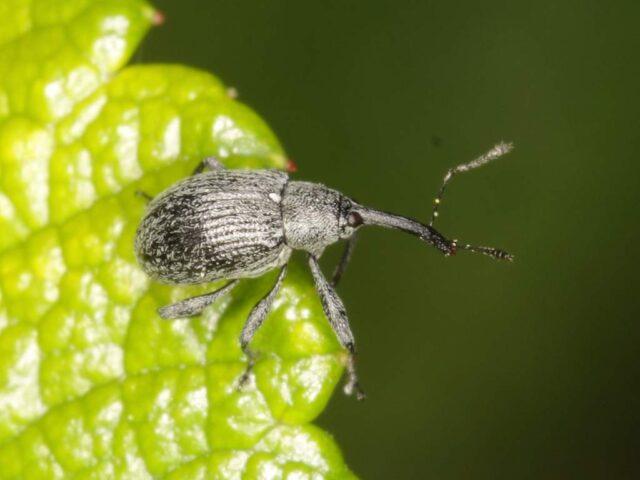
Strawberry weevil is a small pest 2–3 mm long
The insect overwinters under leaf litter, eats young leaves in the spring, and lays eggs inside the bud.
The sawfly is also dangerous for strawberries. It damages the leaves, gnawing them to the point of lace. The plant weakens and may suffer from fungal or viral infections.
Slugs pose a danger to berries. They eat the fruits that are on the ground.Slugs are collected by hand, and when they appear en masse, the soil is sprinkled with pine needles or crushed nut shells.
Advantages and disadvantages of the variety
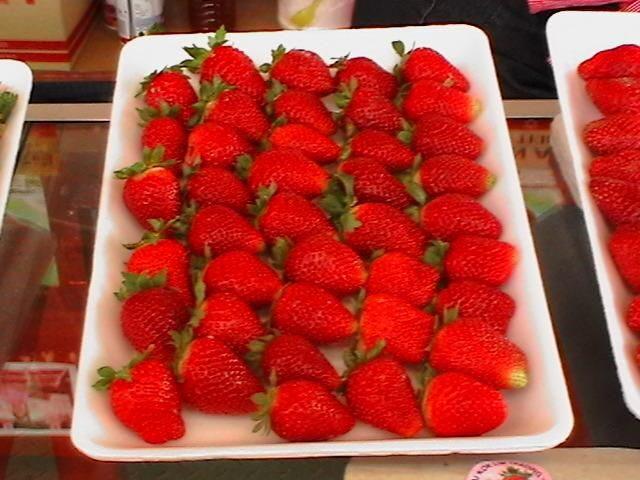
Gardeners value Ada strawberries for their long-lasting fruiting and aromatic berries.
The variety has a lot of positive qualities. But before planting, you should also become familiar with the shortcomings of the culture.
Advantages | Minuses |
Extended fruiting | Low yield |
Large berries | In the second wave the strawberries are much smaller than in the first |
Pleasant taste | Needs care |
The versatility of the fruit | Resistance to diseases and pests |
Strawberry flavor | In regions with little snowy winters and unfavorable conditions, shelter is required |
Good frost resistance |
|
Self-fertility |
|
Features of cultivation
Ada strawberry is a light-loving plant. Therefore, open areas are chosen for growing crops. The soil should be loose and fertile. Clay areas are not suitable for Ada strawberries.
Leave 30–40 cm between bushes, 50–60 cm between rows.
Remontant varieties are demanding in terms of growing conditions and care. Features of cultivation:
- If you need to get a second harvest a little earlier, you should remove the first spring flower stalks. This procedure allows you to achieve larger second wave berries.
- Regular fruiting leads to a shorter lifespan of bushes. Therefore, it is necessary to take care of updating the beds. This is done in the second or third season after planting the first bushes. Strawberries of this variety produce a lot of whiskers, so there are no problems with reproduction. But the process cannot be left to chance either.
Strong thickening of beds contributes to the development of fungal diseases
- Timely application of fertilizers allows you to increase productivity and also extend the life of the bushes.
- Good predecessors for Ada strawberries: garlic, carrots, beans, peas, radishes, beets, onions. A bed after potatoes, cucumbers, and eggplants is not the best option for the crop.
Conclusion
Ada strawberry is a large-fruited variety with extended fruiting. With proper care, it produces two harvests per season. Not suitable for commercial cultivation, because no more than 300 g of strawberries are obtained from each bush. The berries are used fresh and for winter preparations.
Reviews from gardeners about Ada strawberries
